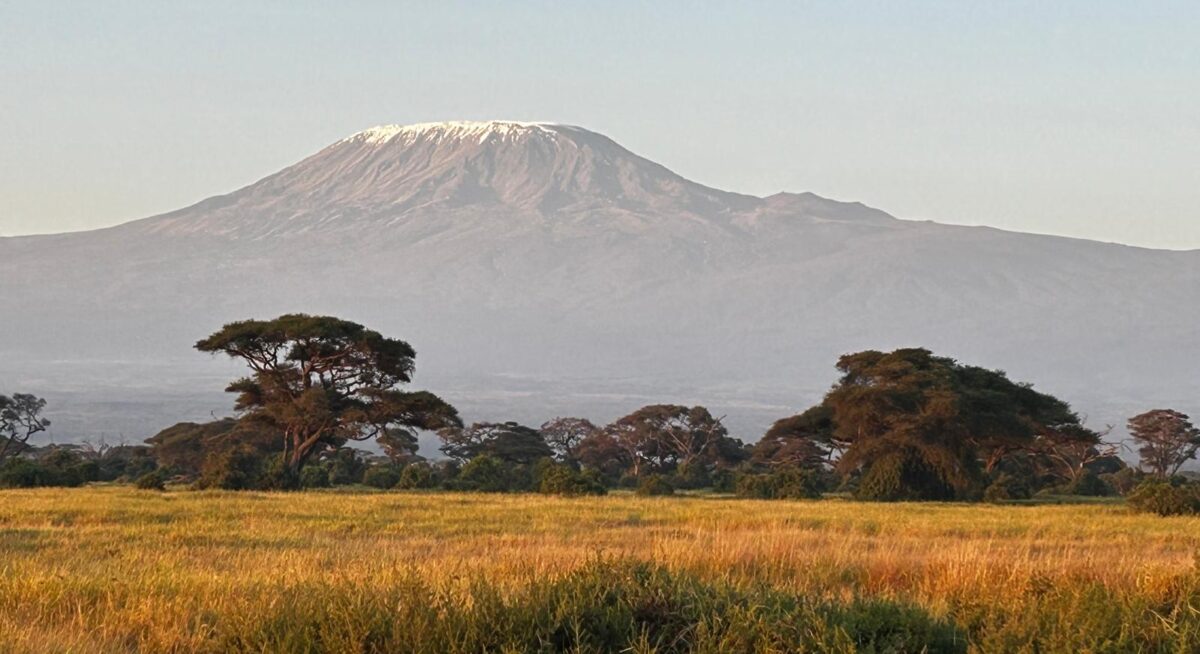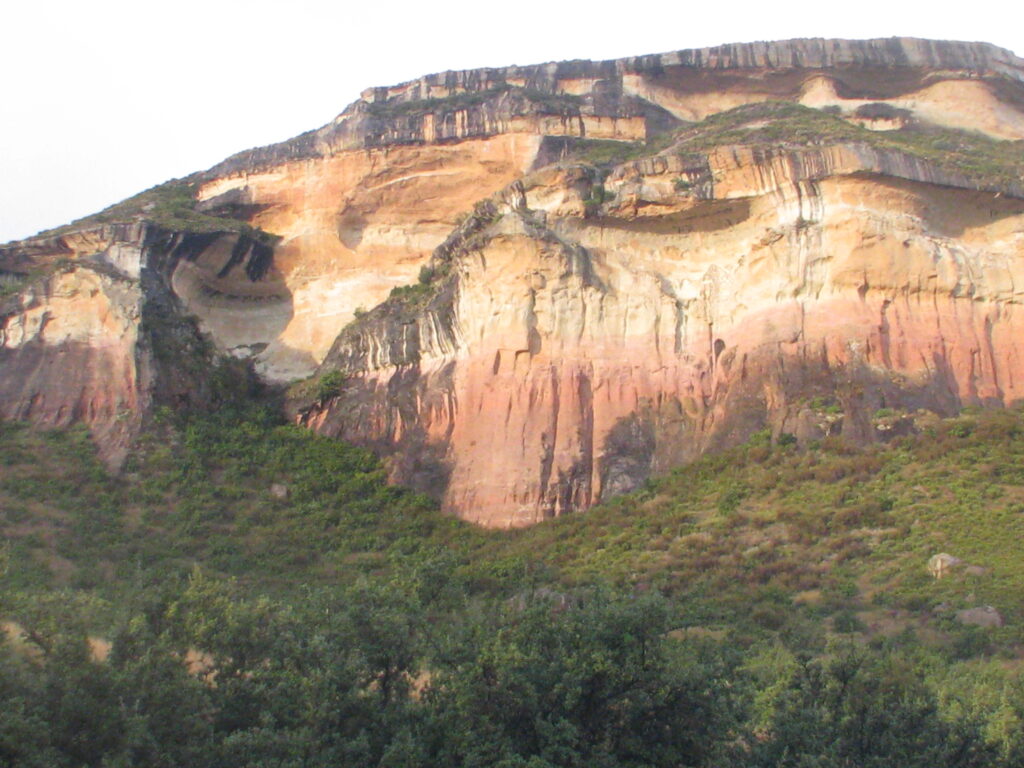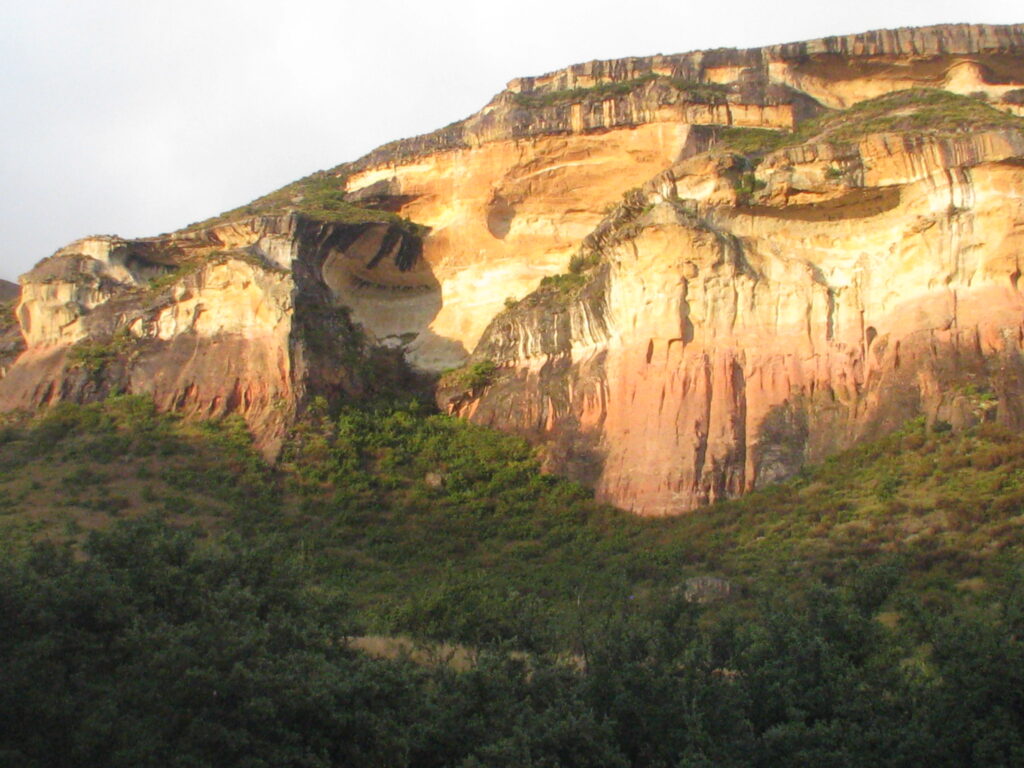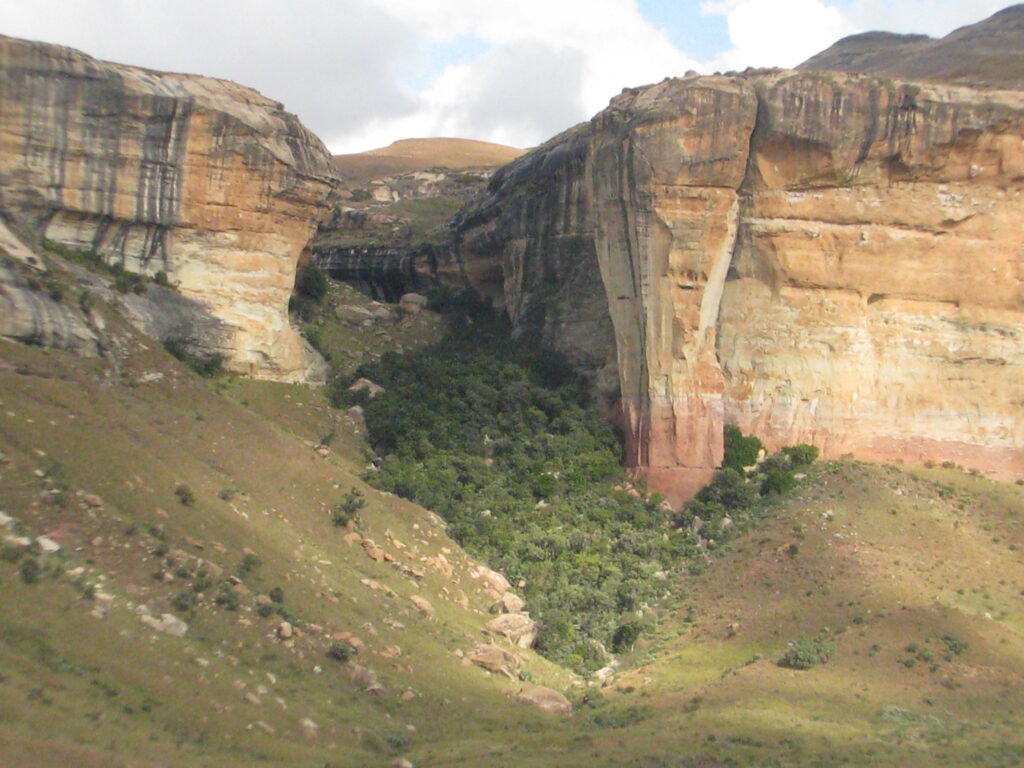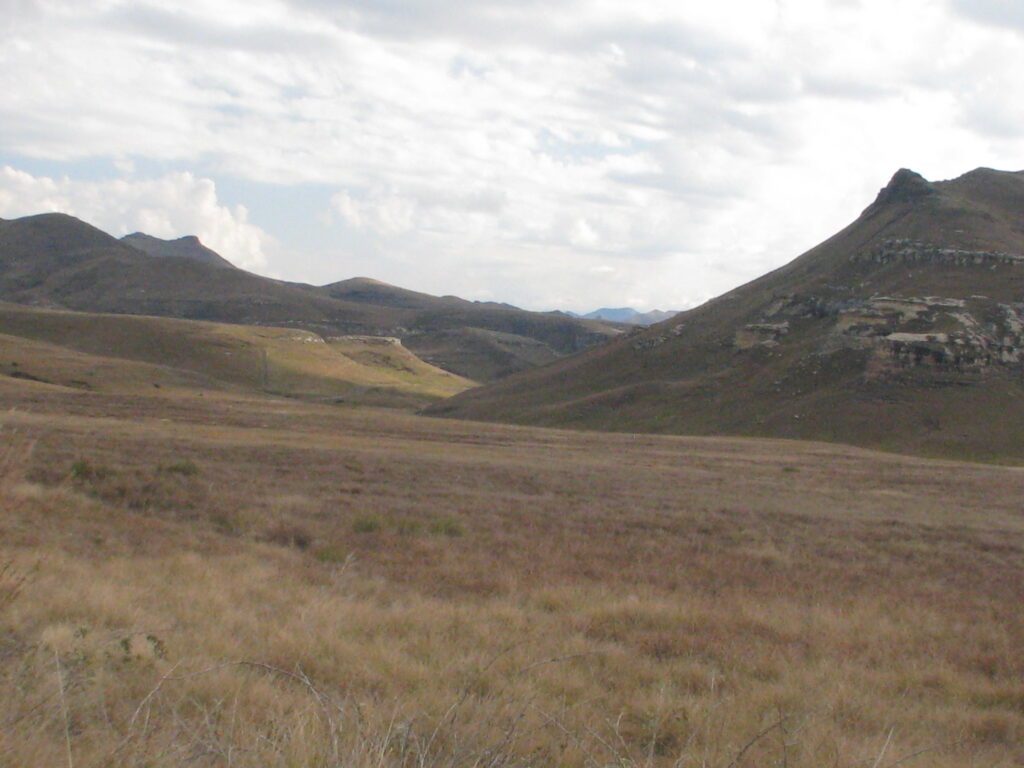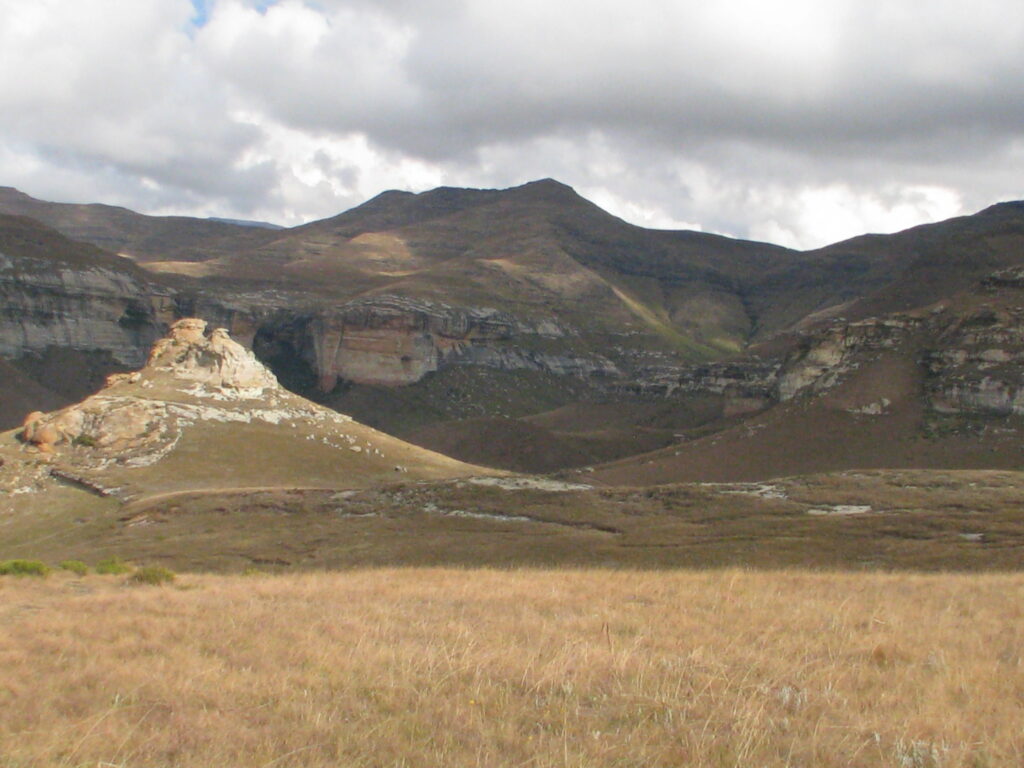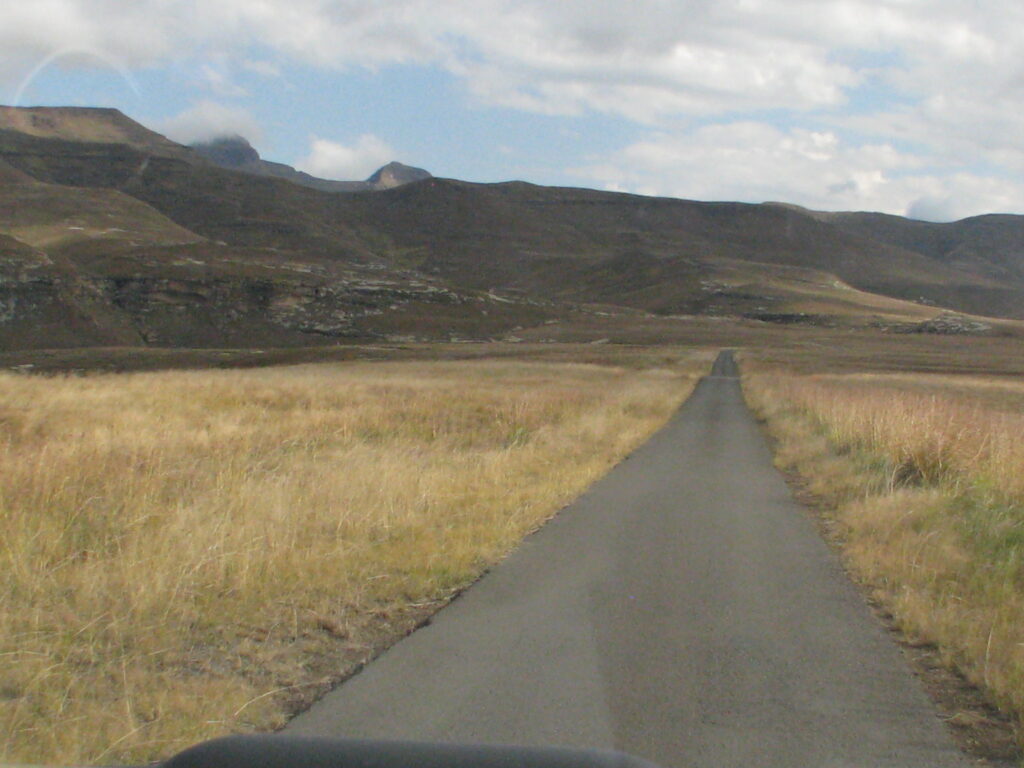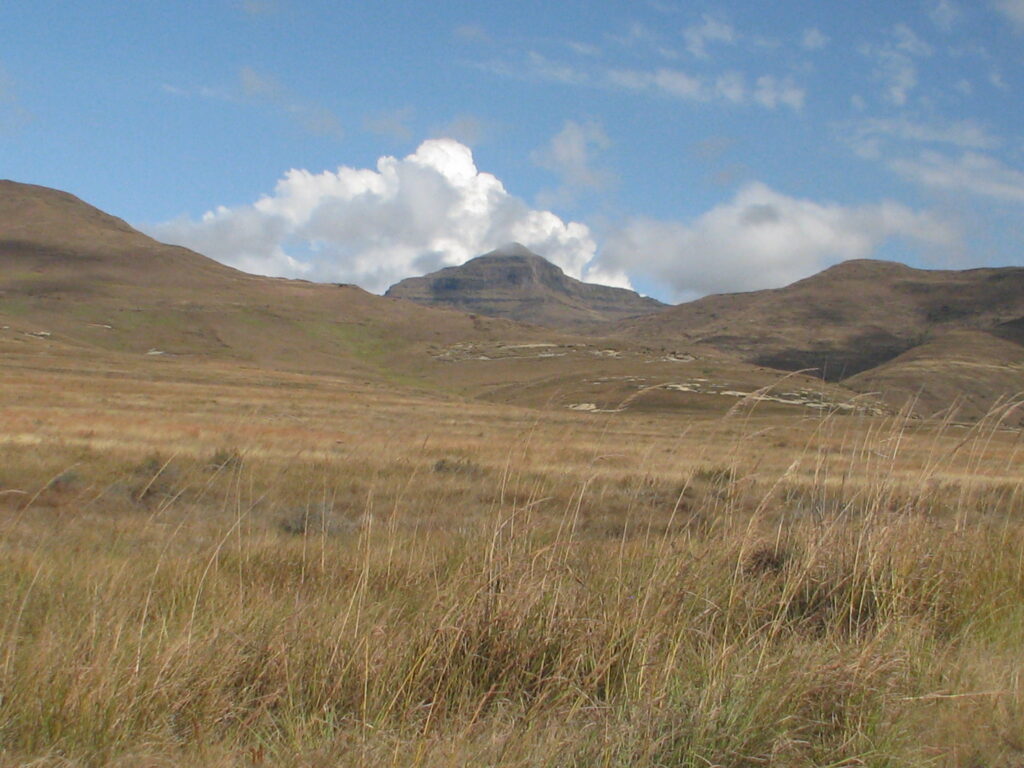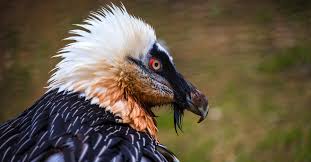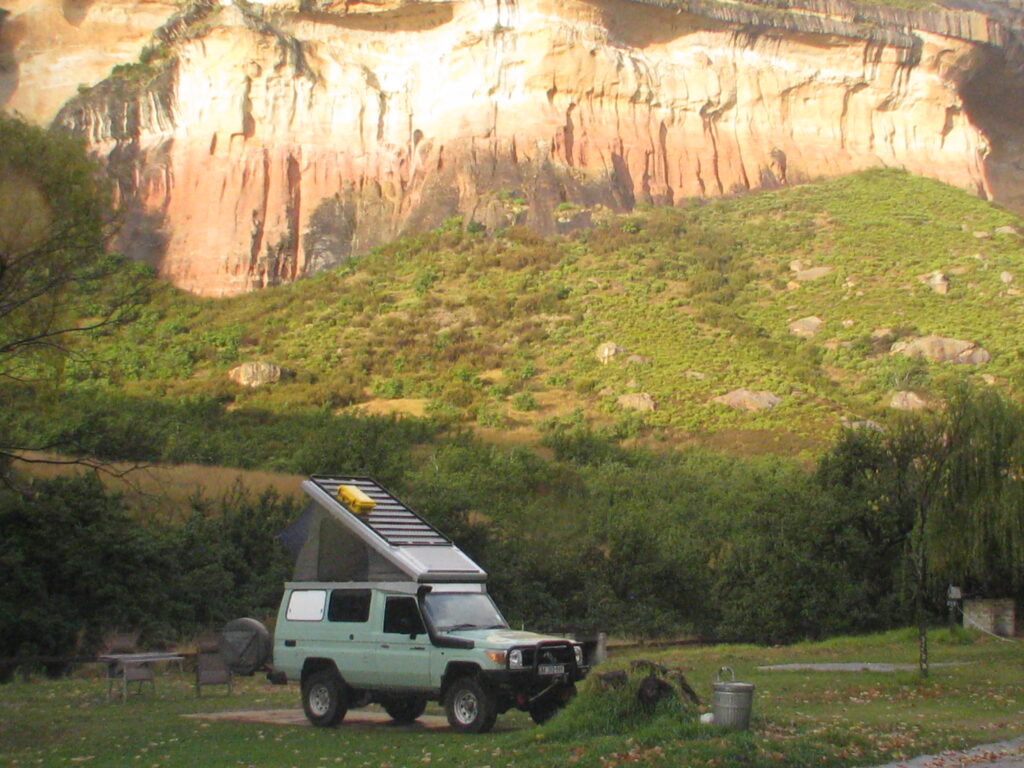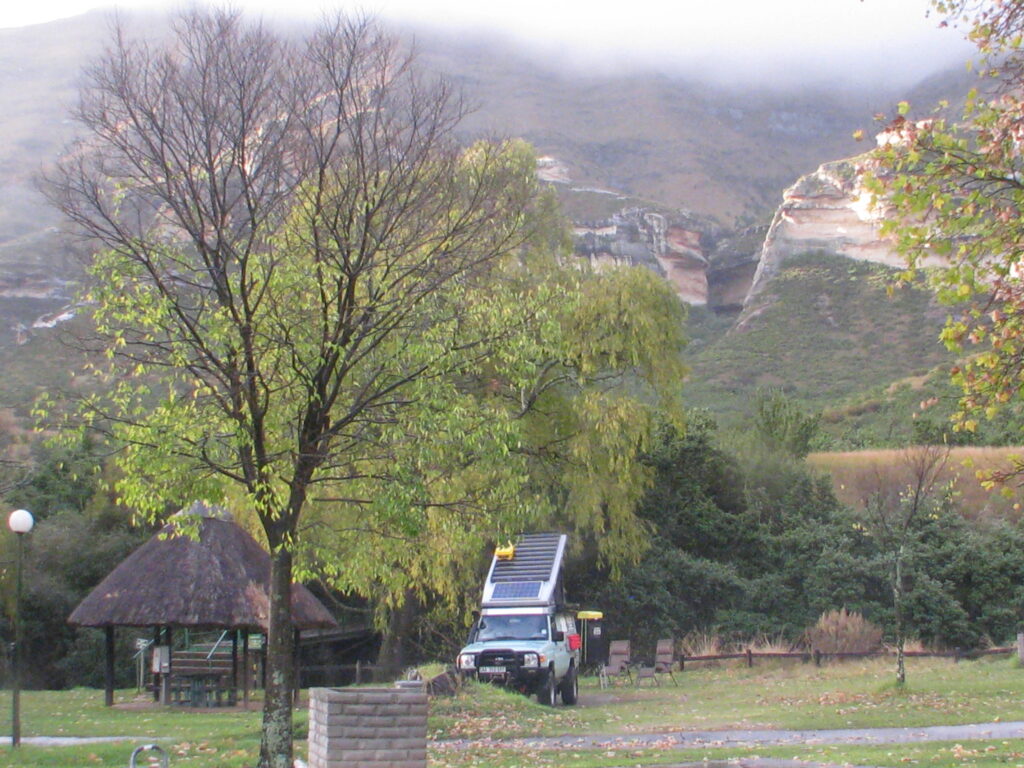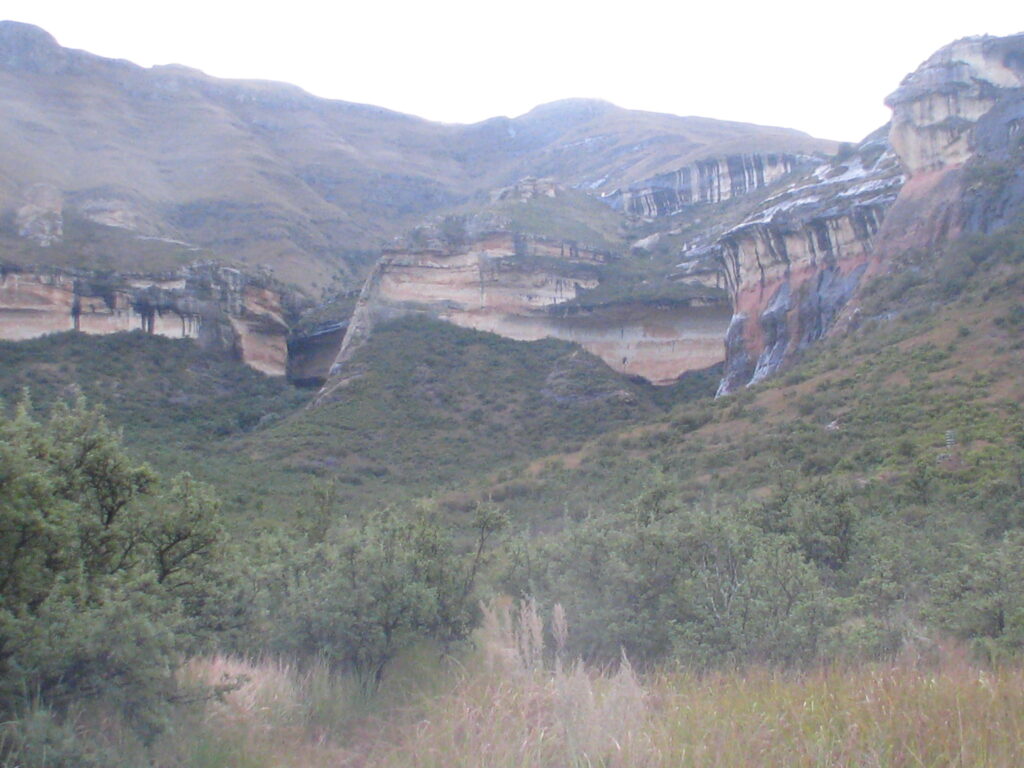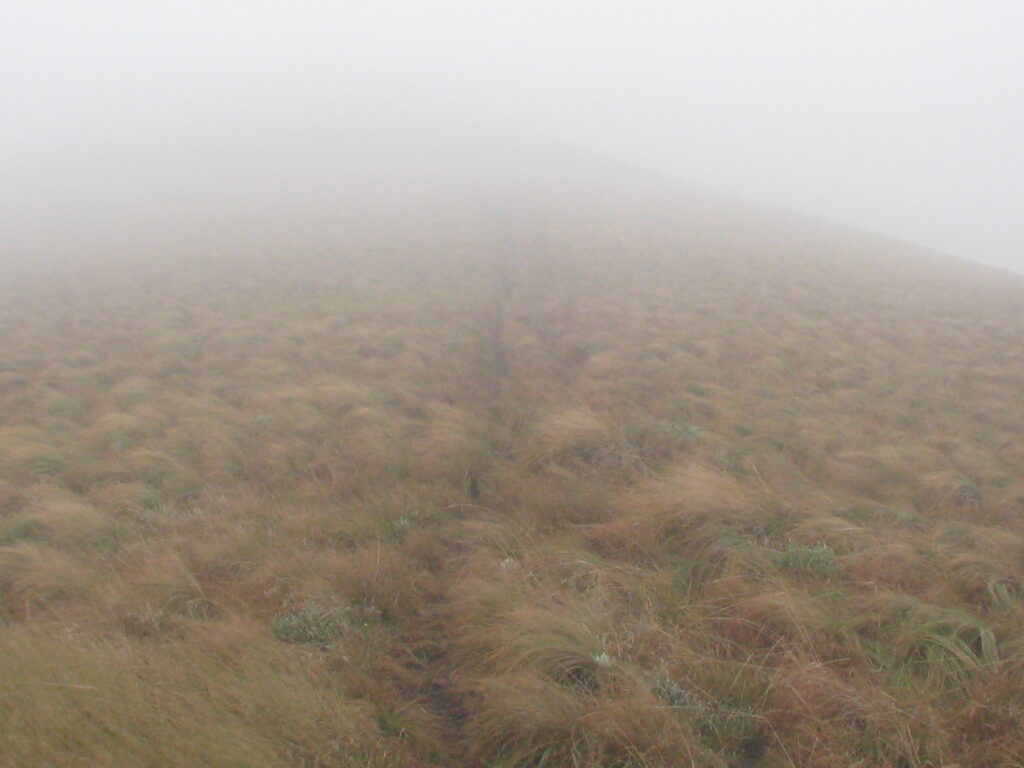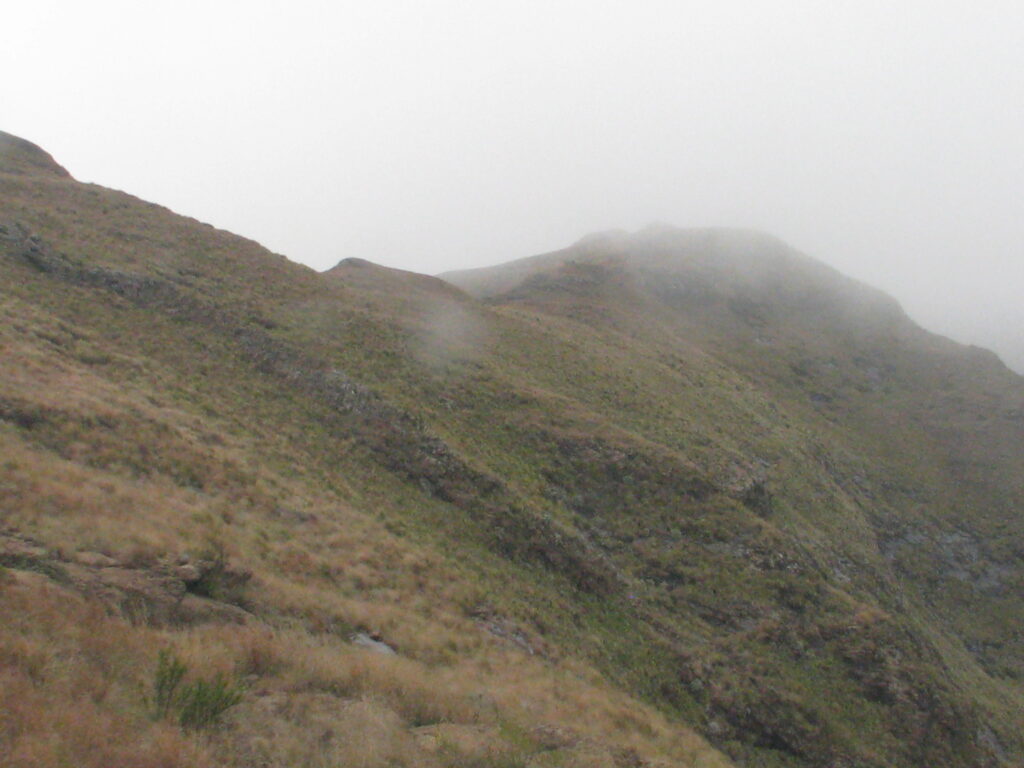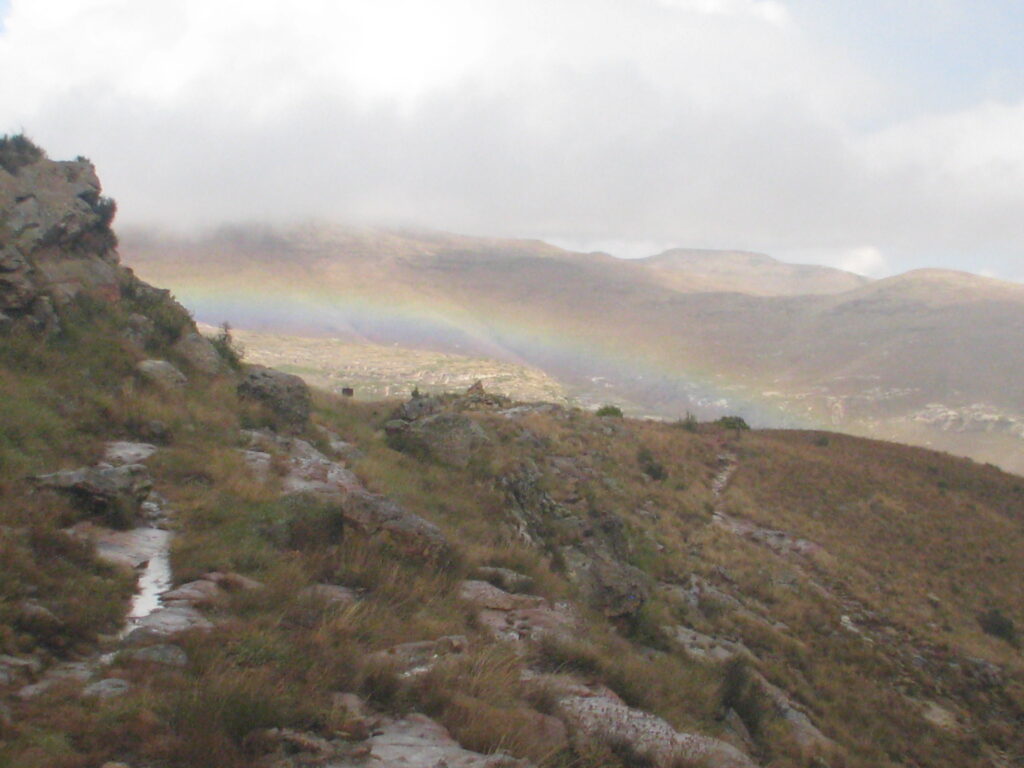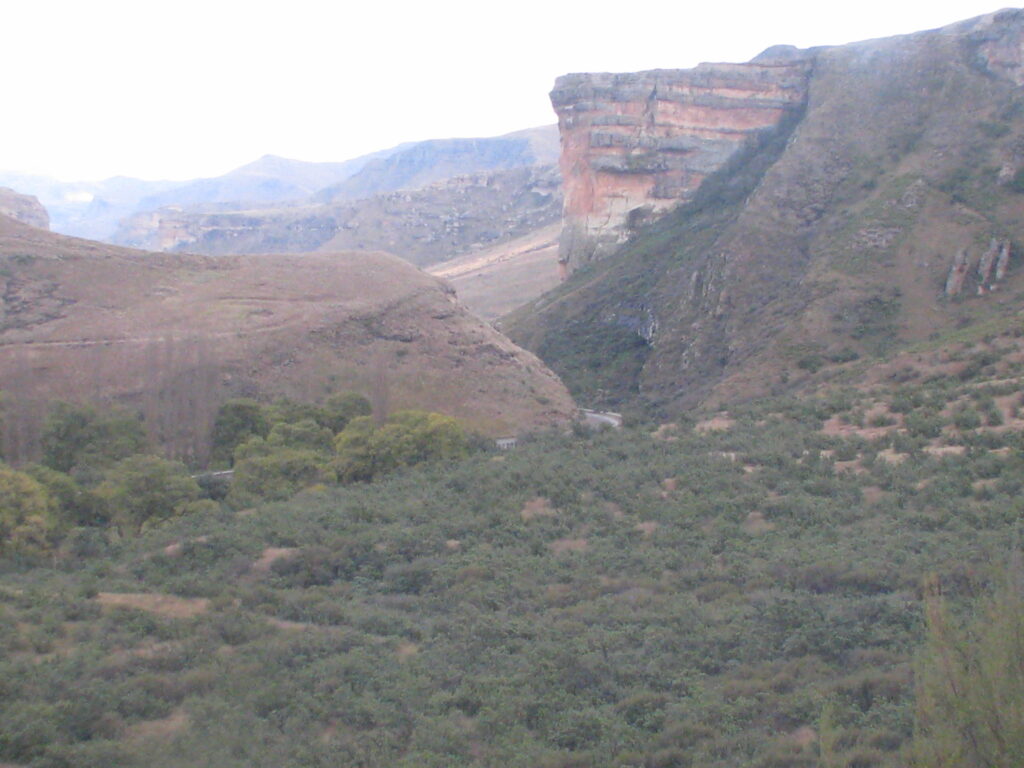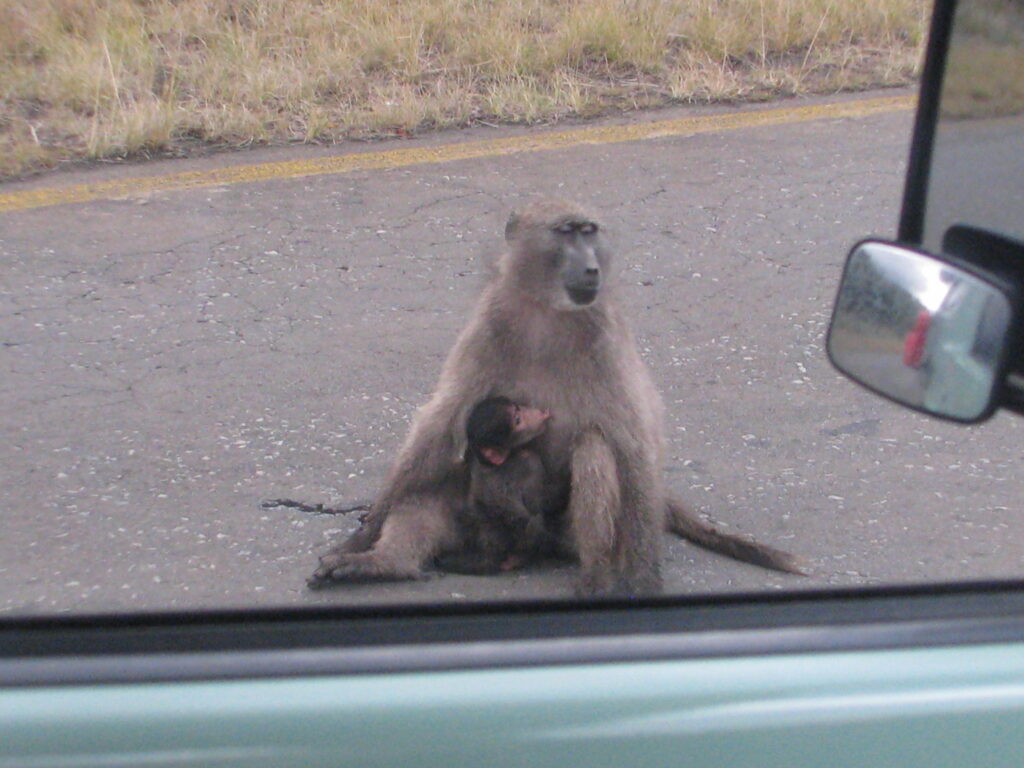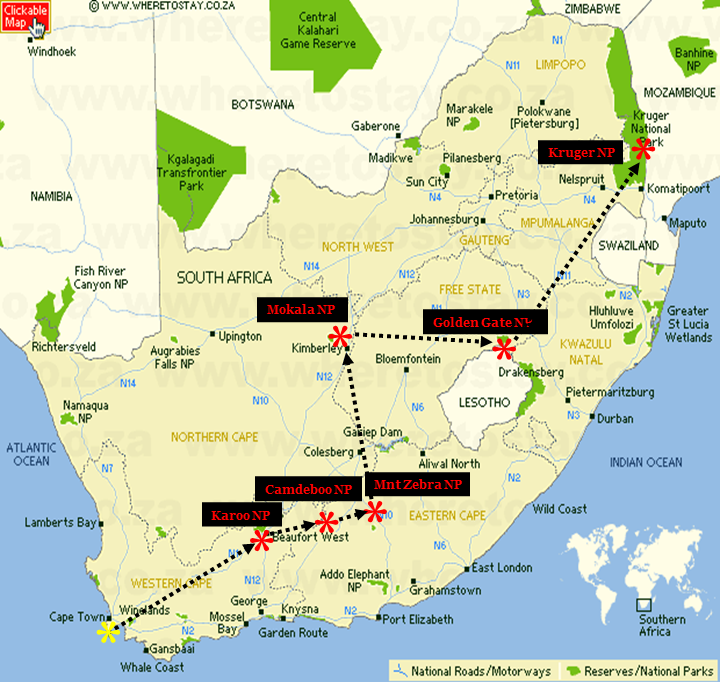
WARNING – this post is a long one as I have a lot to report on given it’s my first day in Kruger National Park.
By the way, I finally was able to upload the videos of the Green Dragon in case you are interested – see the Vehicle page on this website.
Before introducing Kruger and showing you some fun wildlife observations, I want to share one unrelated observation. The southeastern entrance to Kruger where I was entering the Park is very close to the Mozambique border. Due to the inefficiency of the border post, the coal trucks on the South African side of the border on the major highway I was traveling on were backed up in a line that extended at least 10 miles, I kid you not. At the pace they were moving it would take several days, at least, for a truck to get across the border. Why they are moving all this coal via truck and not train, when there is a track along this route, is beyond me. Fortunately, I was able to simply skirt around the procession and proceed on my way.
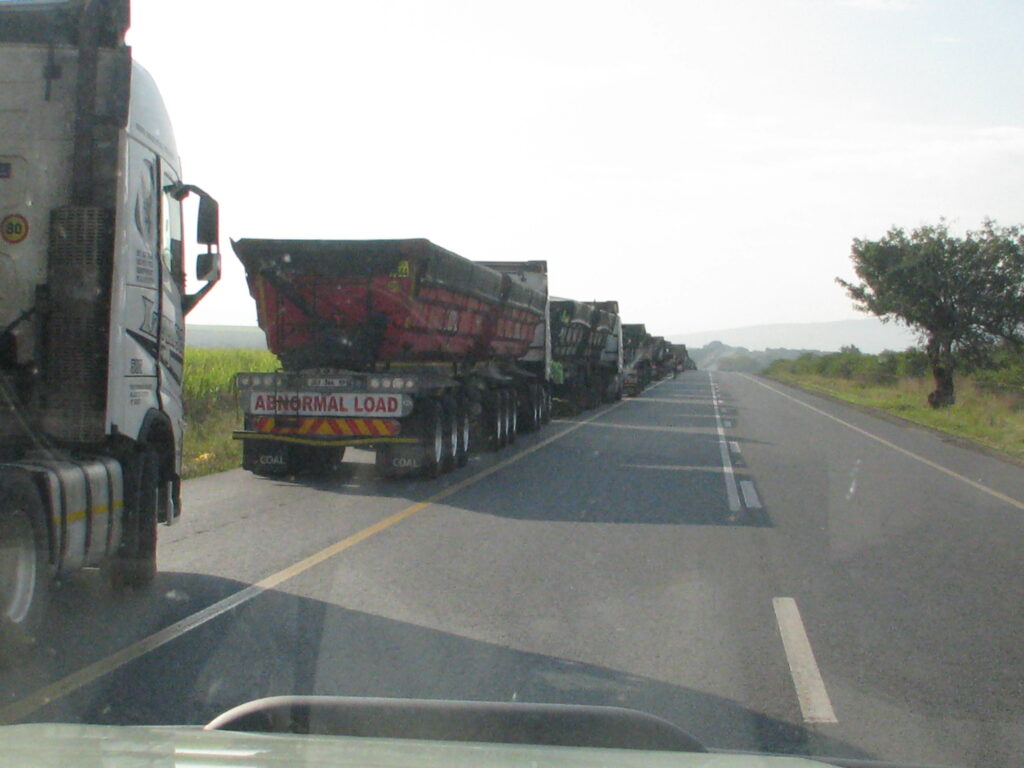
Ok, let’s introduce the iconic Kruger National Park, the flagship Park of South Africa located in the northeastern corner of the country bordering Mozambique and Zimbabwe. Kruger NP (7,576 sq mi), established in 1926, is both the 1st national park established in South Africa as well as the largest in the country, and the 6th largest national park across the entire continent of Africa. The Park is elongated north to south – extending 220 miles from north to south along the western slopes of the narrow Lubombo Mountain chain which forms the border with Mozambique and running 40 miles from east to west, on average, along its length. As a consequence of Kruger’s latitudinal and elevational gradients and varied soils derived from mostly igneous (of volcanic origin) materials, the Park supports a wide range of ecosystems and varied habitats for an exceptional array of wildlife. Kruger is an important stronghold for several of Africa’s most iconic large mammals, including supporting more than half the world’s remaining white rhinos, along with substantial populations of giraffes, buffaloes, elephants, black rhinos, leopards, cheetahs, African wild dogs and, of course, lions.
My first public campsite in Kruger is Skukuza, located in the southern section of the Park along the banks of the perennial Sabie River. The landscape surrounding this section of the Park is highly varied. To the east are the low, arid rhyolite hills of the Lebombo Mountains. The soils of the Lebombo are shallow and stony, and as this is one of the driest parts of Kruger, it is dominated by drought-resistant plants.
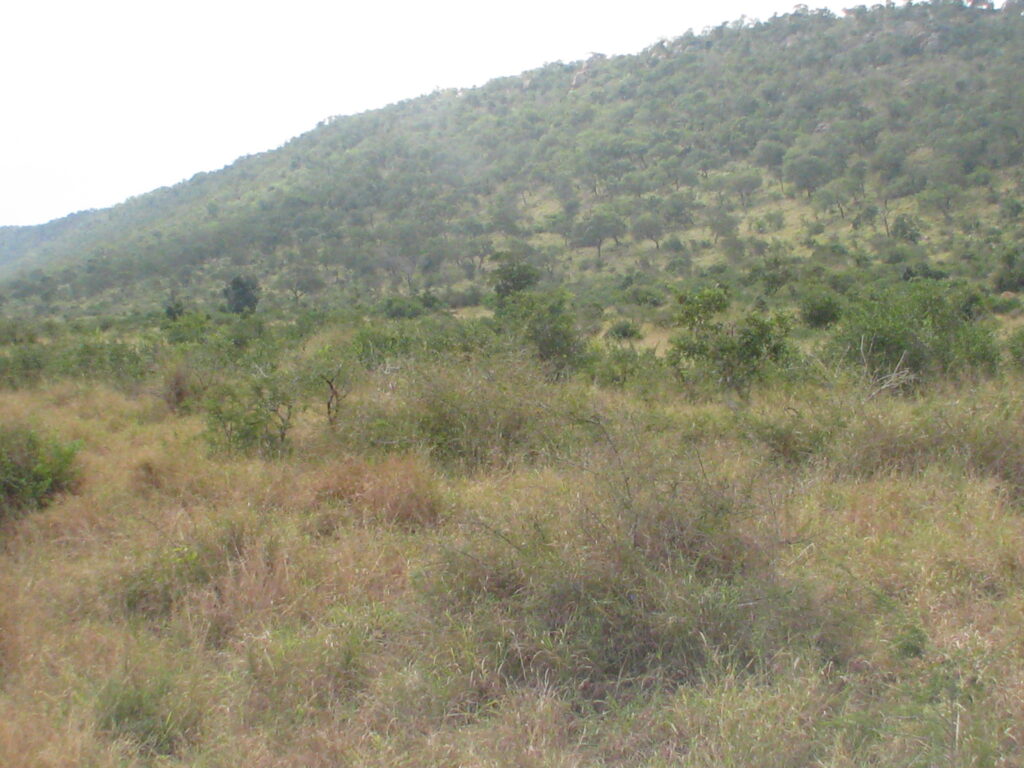
Lying west of the Lebombo hills is a rather vast open savannah grassland on basalt soils (dark, fine-grained igneous rock rich in magnesium and iron derived from extrusive molten lava). These savannah grasslands contain scattered acacia trees and form the classic picture of the African savannah.
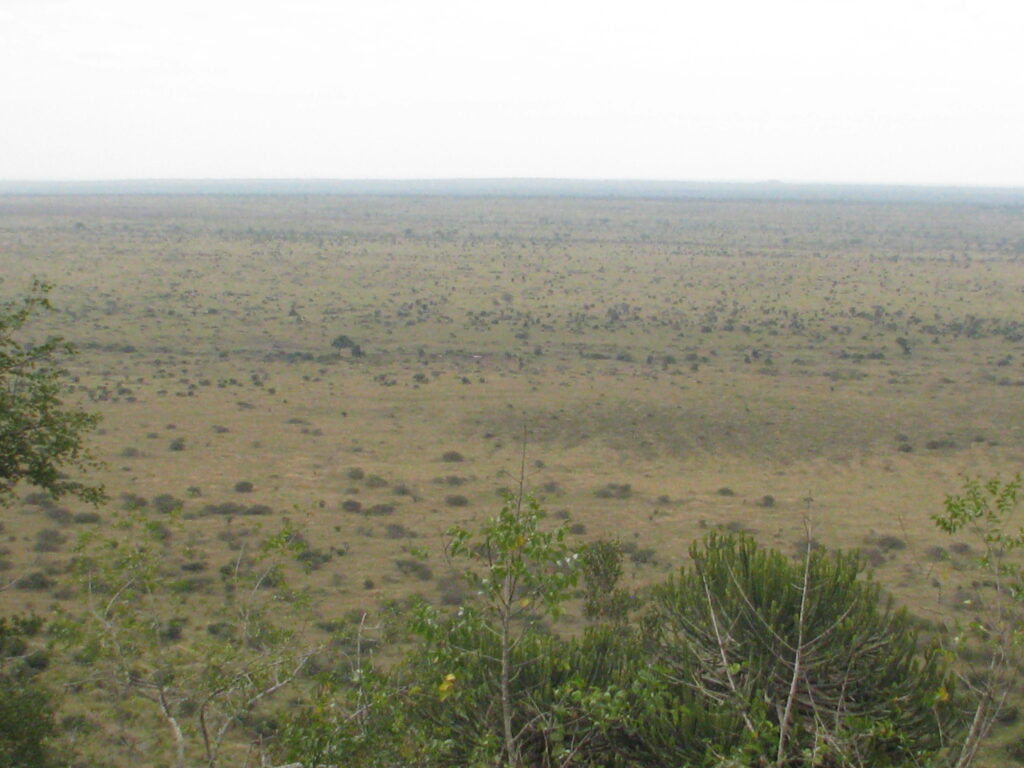
Further to the west in the vicinity of my campsite at Skukuza are areas of mixed thorn thickets and marula woodlands on granite soils (lighter, coarse-grained igneous rock rich in quartz and feldspar, also derived from extrusive molten lava).
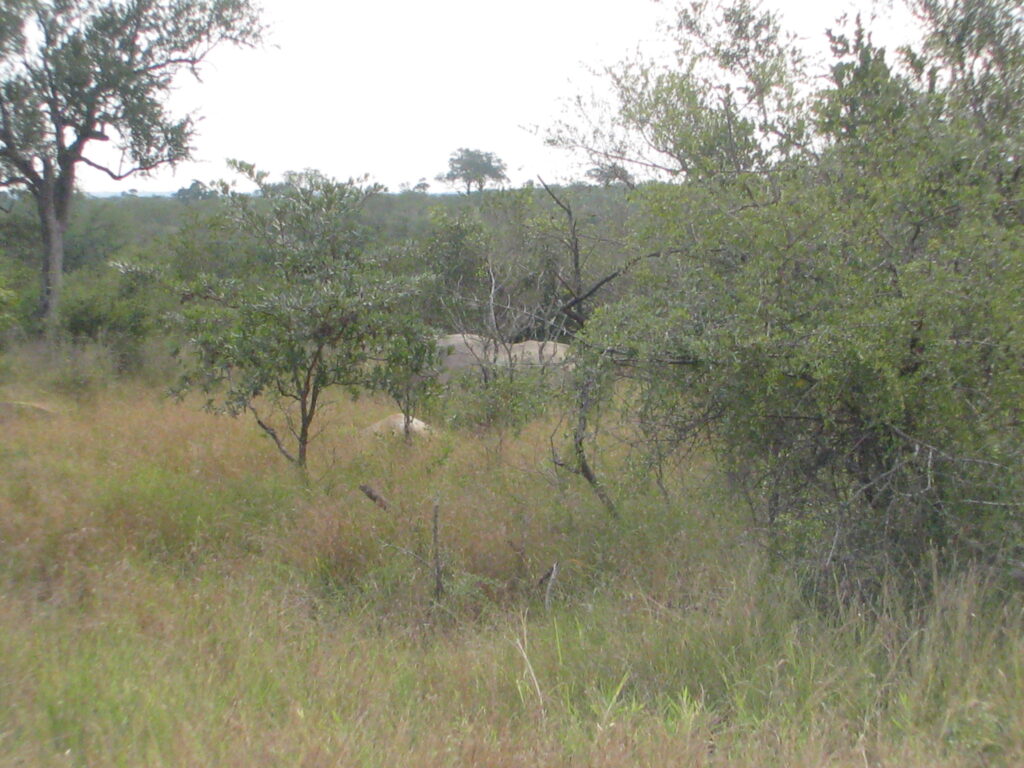
The marula tree is worth describing in more detail, as it is important for its commercial and wildlife uses, and it is an important member of what is referred to as miombo woodlands, which are the most extensive tropical seasonal woodland and dry forest formation in Africa. Miombo is found throughout west, central and east Africa and extends southward just barely into South Africa. Marula is a medium-sized deciduous fruit-bearing tree, indigenous to the miombo woodlands of Southern Africa, and it has a beautiful spreading crown.
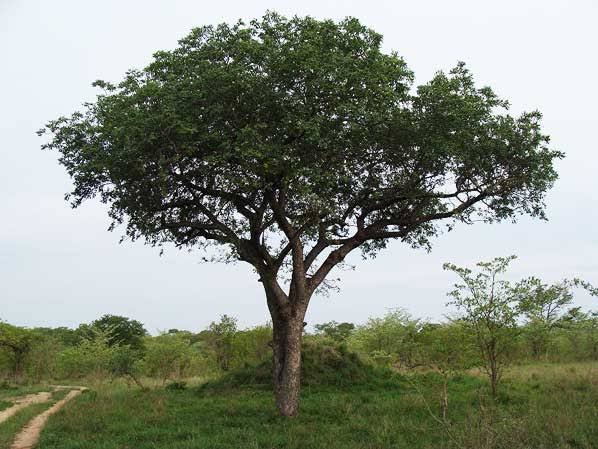
Some cool facts about the Marula tree: The marula fruit is used to make a beer and liqueur, and is used in fruit juice blends – it is sky-high in Vitamin C. In addition, the extracted nut oil is similar in its properties to olive oil, highly nutritious and exceptionally stable, with the additional benefit of having powerful antioxidant properties, and it is used as an ingredient in cosmetics (e.g., moisturizers). Locals believe it is known as “The Marriage Tree” in Zulu culture, as it is believed that those who marry beneath its branches will enjoy vigour and fertility all their days. And of course, the fruit is eaten by many wildlife species and is a favorite of elephants. Interestingly, elephants damage the trees by eating the bark and can even kill the trees by girdling, but at the same time are an important disperser of the seeds which they spread in their dung.
Ok, that’s enough on the environment of Kruger south, let’s see some wildlife. Here are some anecdotal wildlife observations from today:
Peek-a-boo, I see you!
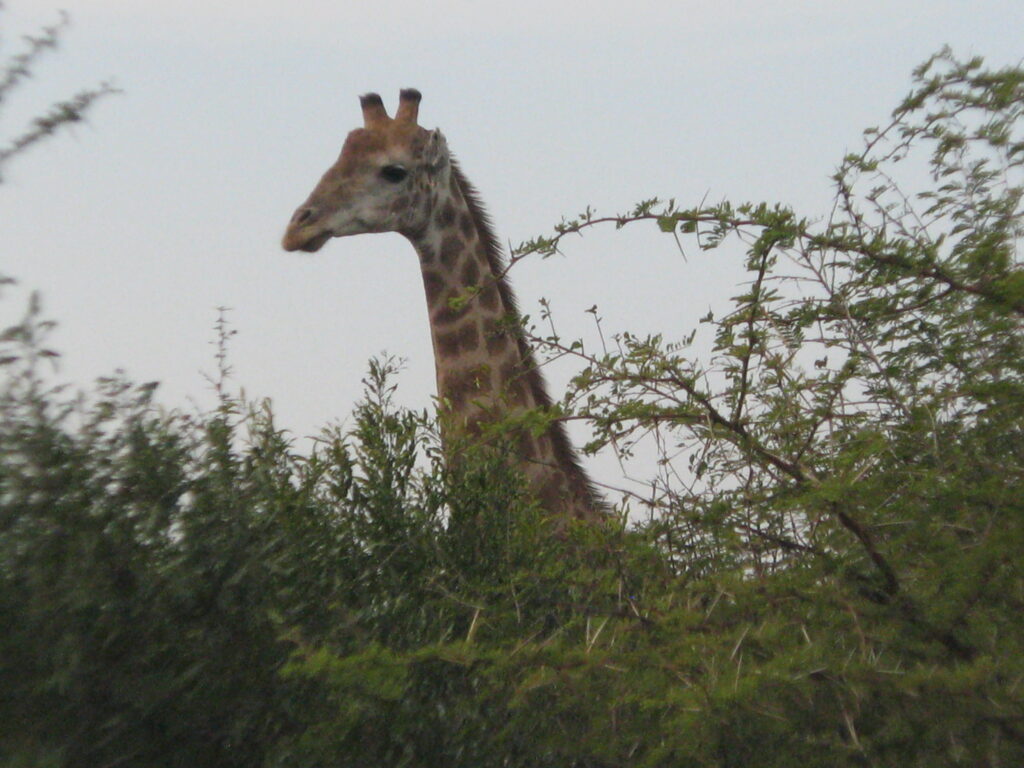
Do you see the Rhino in the bushes?
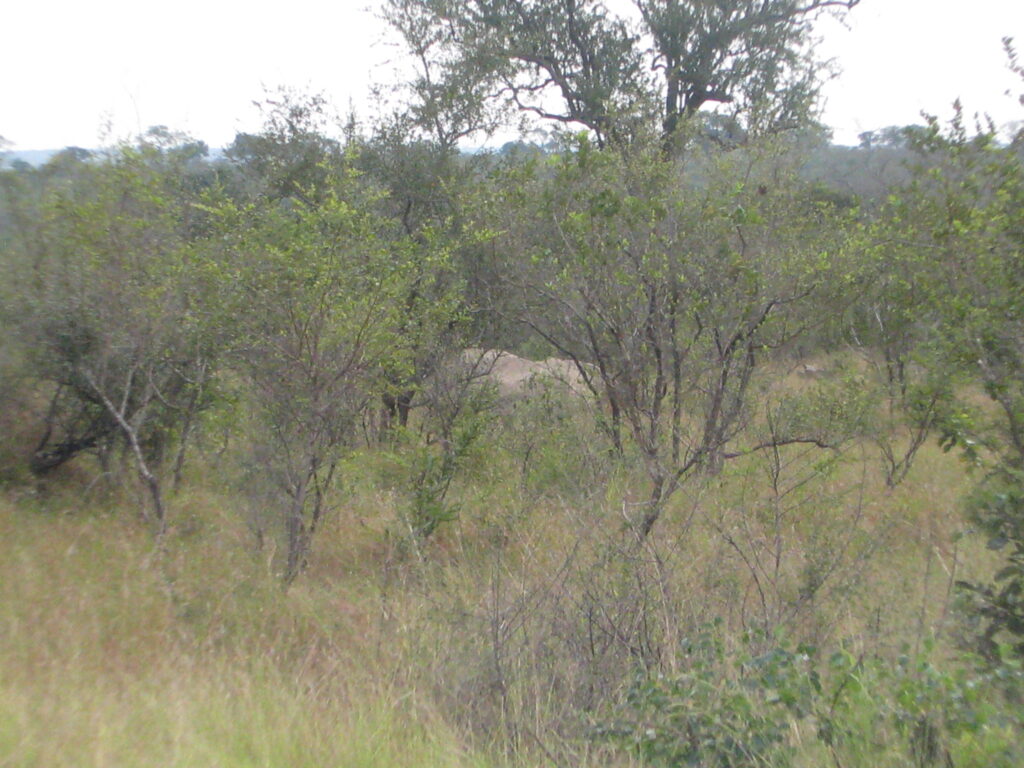
Whoops, it’s just a rock!
Let’s all cross in an orderly fasion please:
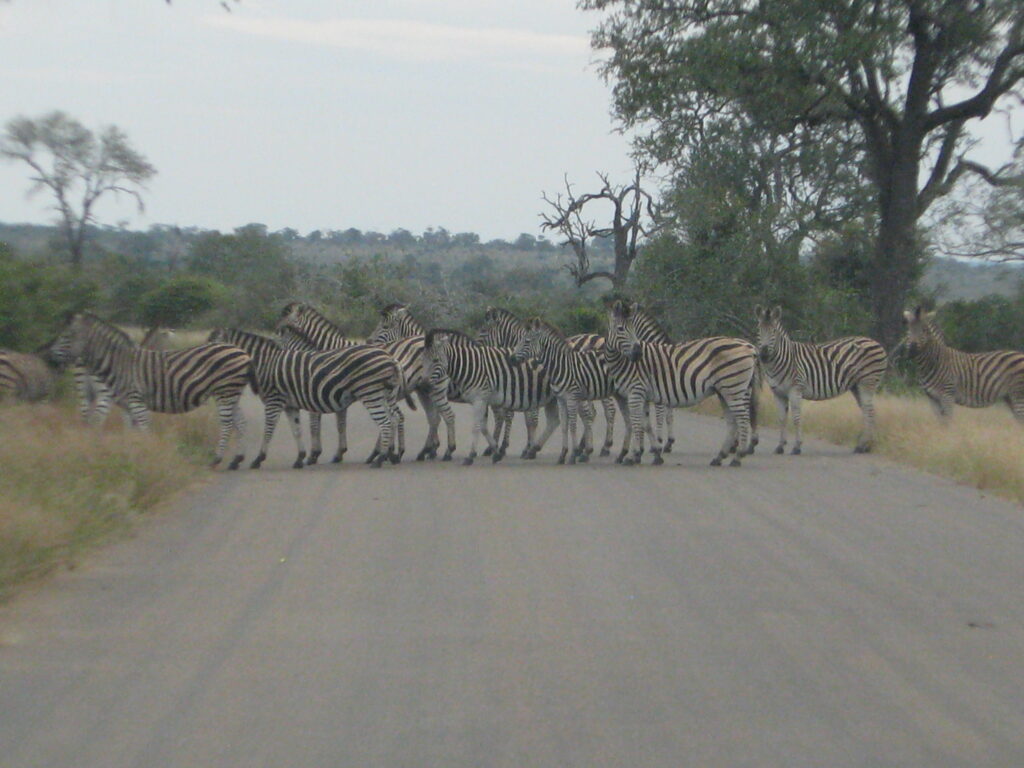
Watch out for that bison crossing the road – I mean Cape Buffalo!
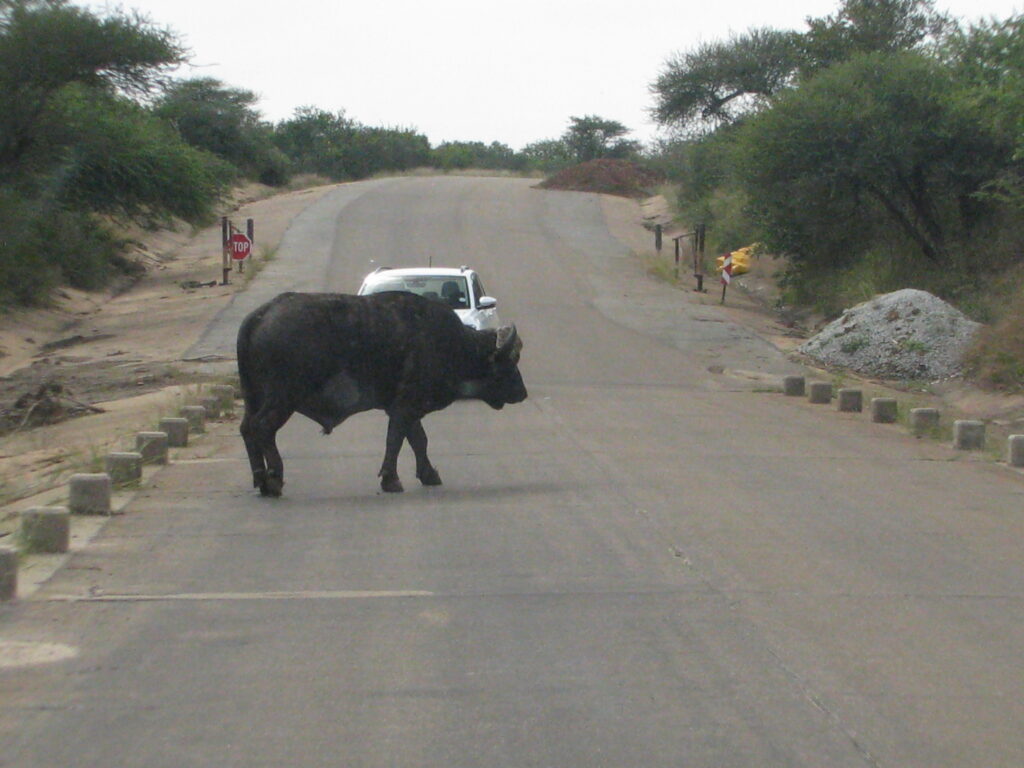
Shake that booty!
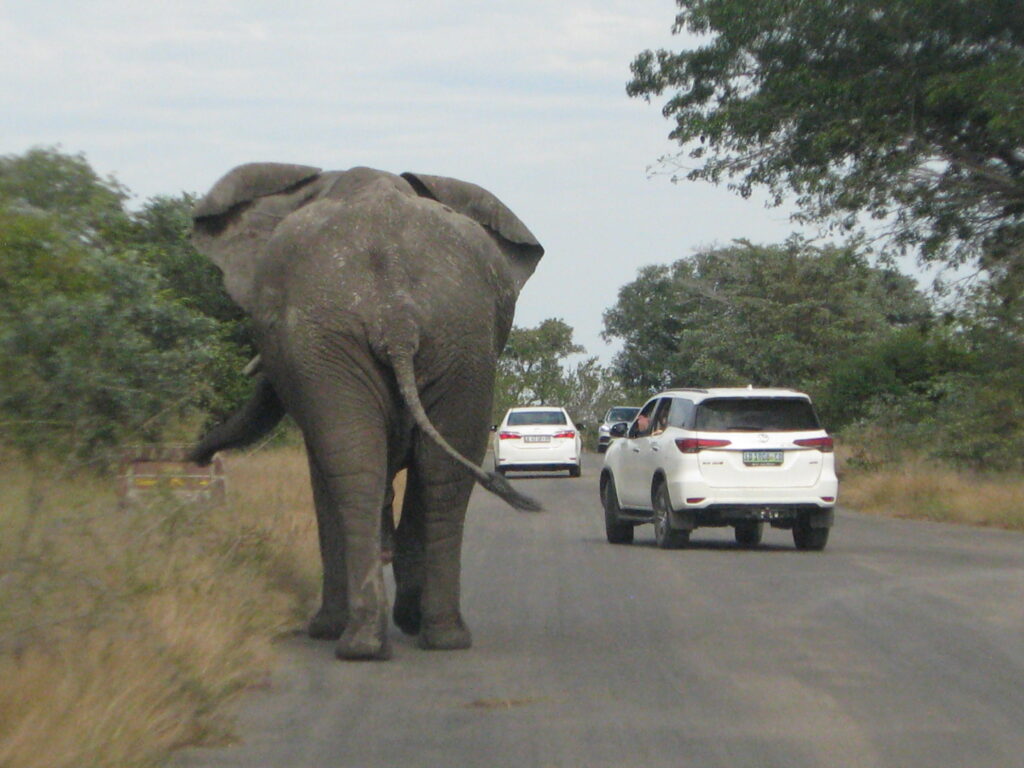
Tuppens for the poor?
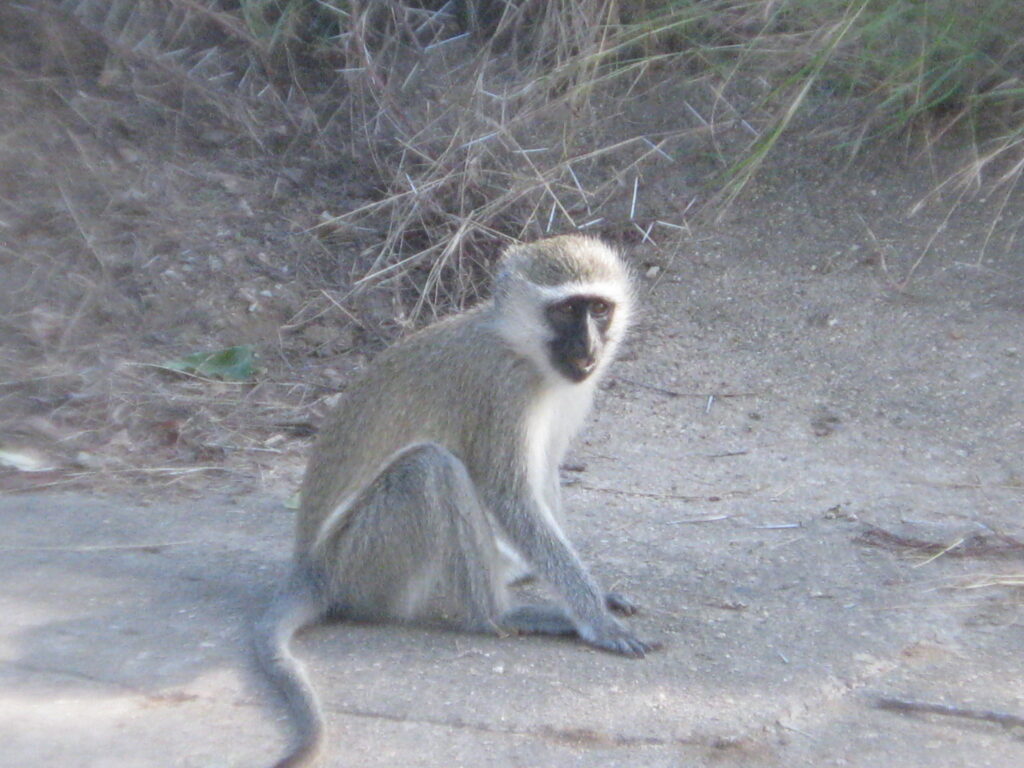
Skylar are you watching: “mommy elephant, big girl elephant, little girl elephant, and baby elephant”
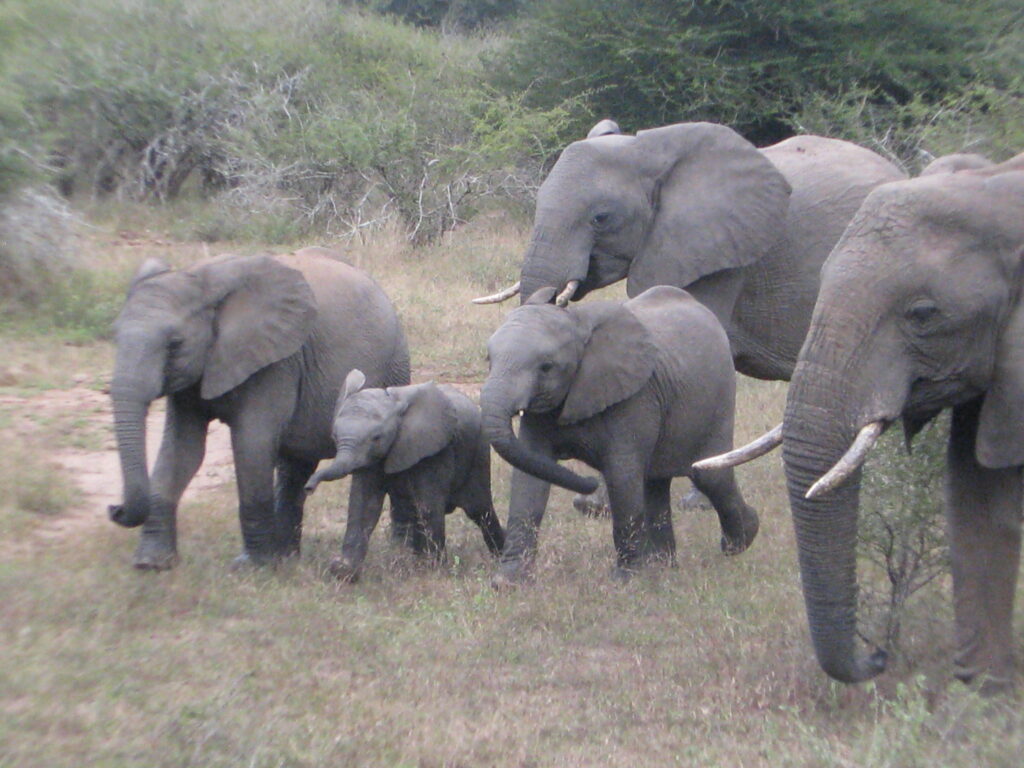
And last but not least, the species of the day – this one’s for you Sherry – is the warthog. Now how could you not love and admire this pig. They eat just about anything and everything, they live in just about any habitat in sub-saharan Africa, they run around in little matriarcal groups called “sounders” – and with their tails held high, they like to roll around in the mud to keep cool, they can burst at speeds of up to 30 mph to escape predators, and they can use their formidable tusks to defend themselves against predators such as lions, leopards and hyena’s.
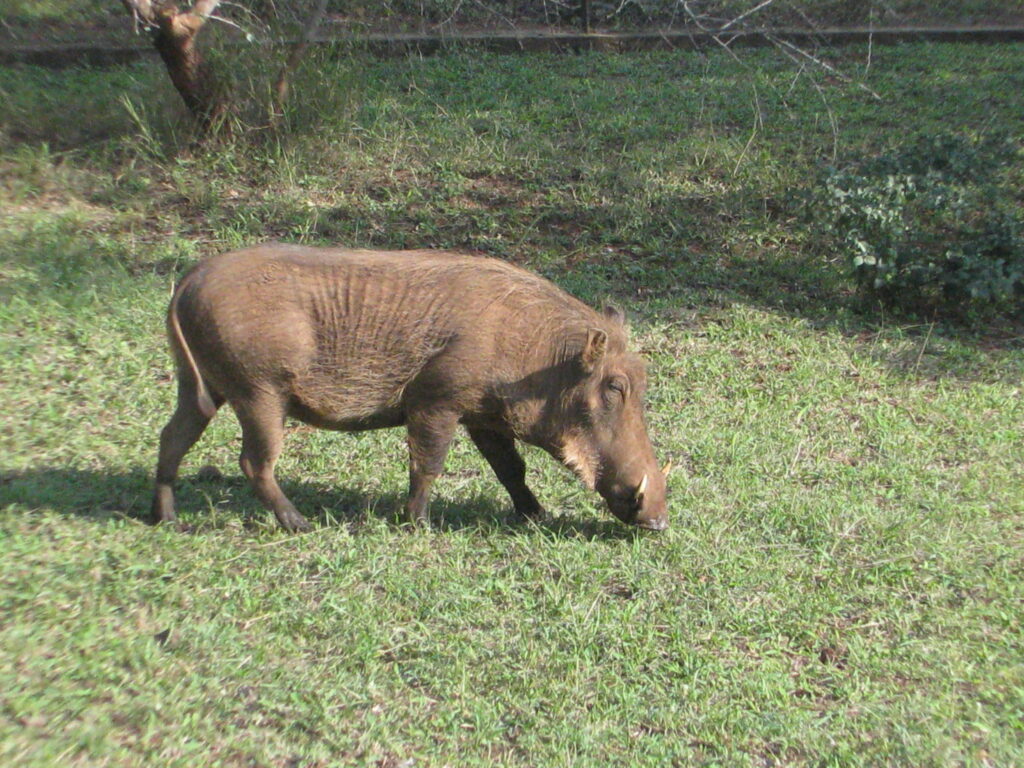
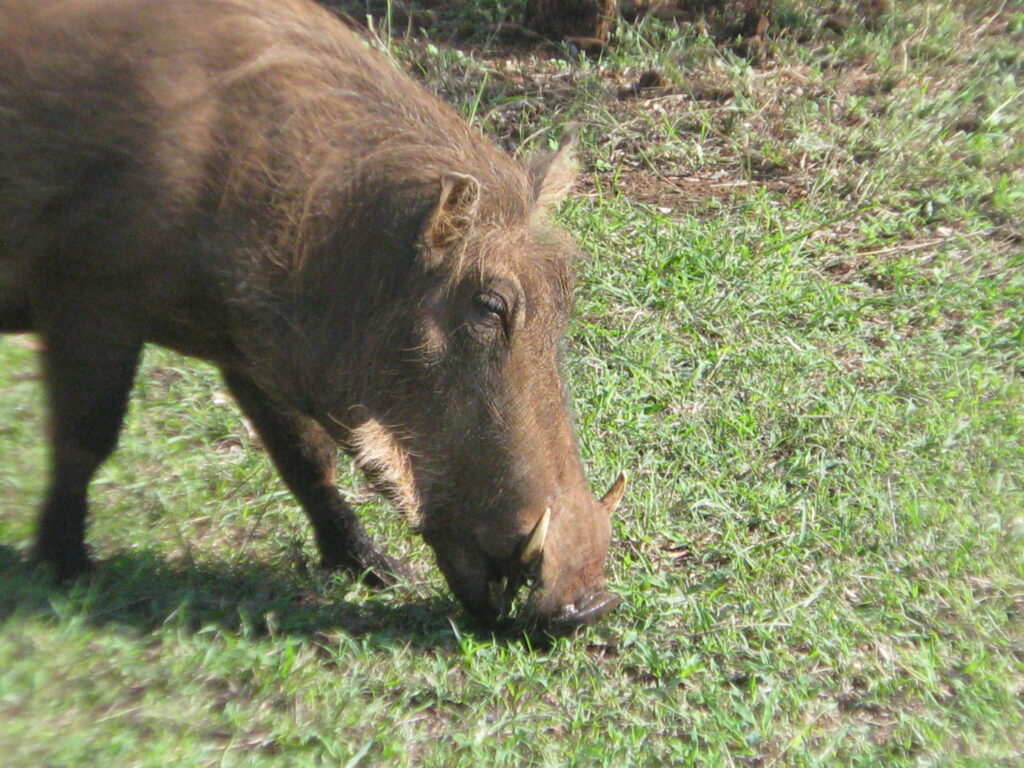
Time for bed. Goodnight all!
